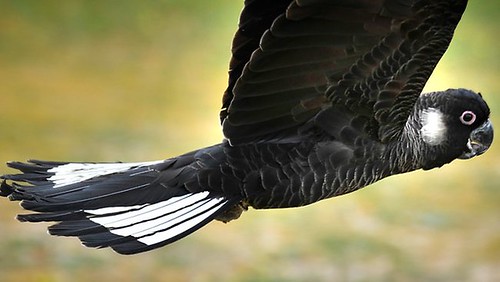 DECLINING: Carnaby's cockatoos are disappearing from the Perth metropolitan area.THE latest cockatoo count has revealed a 40 per cent decline in the number of endangered Carnaby's black cockatoos roosting in the Perth metro area.
DECLINING: Carnaby's cockatoos are disappearing from the Perth metropolitan area.THE latest cockatoo count has revealed a 40 per cent decline in the number of endangered Carnaby's black cockatoos roosting in the Perth metro area.
Data collected at the annual Great Cocky Count, which was held on April 15 this year, showed the population of the cockatoos had fallen from 6700 in 2010 to just 4000 this year.
The Great Cocky Count, which is run by not-for-profit organisation BirdLife Australia and the Department of Environment and Conservation, relies on volunteers to monitor over 200 sites and count cockatoos on a single night in April each year.
It has been running since 2006.
BirdLife Australia's state program manager Cheryl Gole said the 2012 showed a decrease in the number of active cockatoo roosts south of the Swan River.
"The latest results show a 40 per cent decrease since 2010 in the number of Carnaby's counted at night roosts in the Swan Region, which includes the Perth metropolitan area," she said.
"While all the reasons for the decreased number of Carnaby's are not clear, habitat clearance has to be an important factor."
Ms Gole said increasing habitat clearance was the greatest threat to the species and remaining habitat in Perth must be protected.
"The Great Cocky Count is important as it allows us to monitor what is happening with the cockatoos," she said.
"We don't have long-term information yet and it is imperative that we continue the counts to understand the changes we are seeing."
The Great Cocky Count's organiser, Tamara Kabat, said new roost sites had been reported across south-west Australia, including one of more than 1000 cockatoos outside Esperance.
Last year's Great Cocky Count recorded a decline of 37 per cent in the previous 12 months.
When the report was released, shadow environment minister Sally Talbot told PerthNow she was appalled at the findings and the Government had no idea how to protect the species.
"The one thing that (Environment Minister) Bill Marmion could do right now...he could stop authorising the destruction of black cockatoo habitat," Ms Talbot said.
"And instead of that, what he is doing on an almost daily basis is giving his consent to the destruction of habitat."
When defending the results of the 2011 Great Cocky Count, Mr Marmion said more than $9.3 million had been invested to protect and rehabilitate the Carnaby's, Baudin's and forest red-tailed black cockatoos since 2008-09.
"While last year's Cocky Count indicated a decrease in numbers, I am advised by Department of Environment and Conservation scientists that we cannot be sure how much of the difference can be attributed to natural variation and other factors," he said at the time.
Carnaby's black cockatoo live only in the south-west of WA and are an endangered species.
It is estimated the number of cockatoos have declined by at least 50 per cent over the past 45 years.
Most known Carnaby's Black Cockatoo roosts are in the Swan Region in an area that extends from Yanchep to Mandurah, and east into the Darling Range.
The full report from this year's count will be released next month month.
